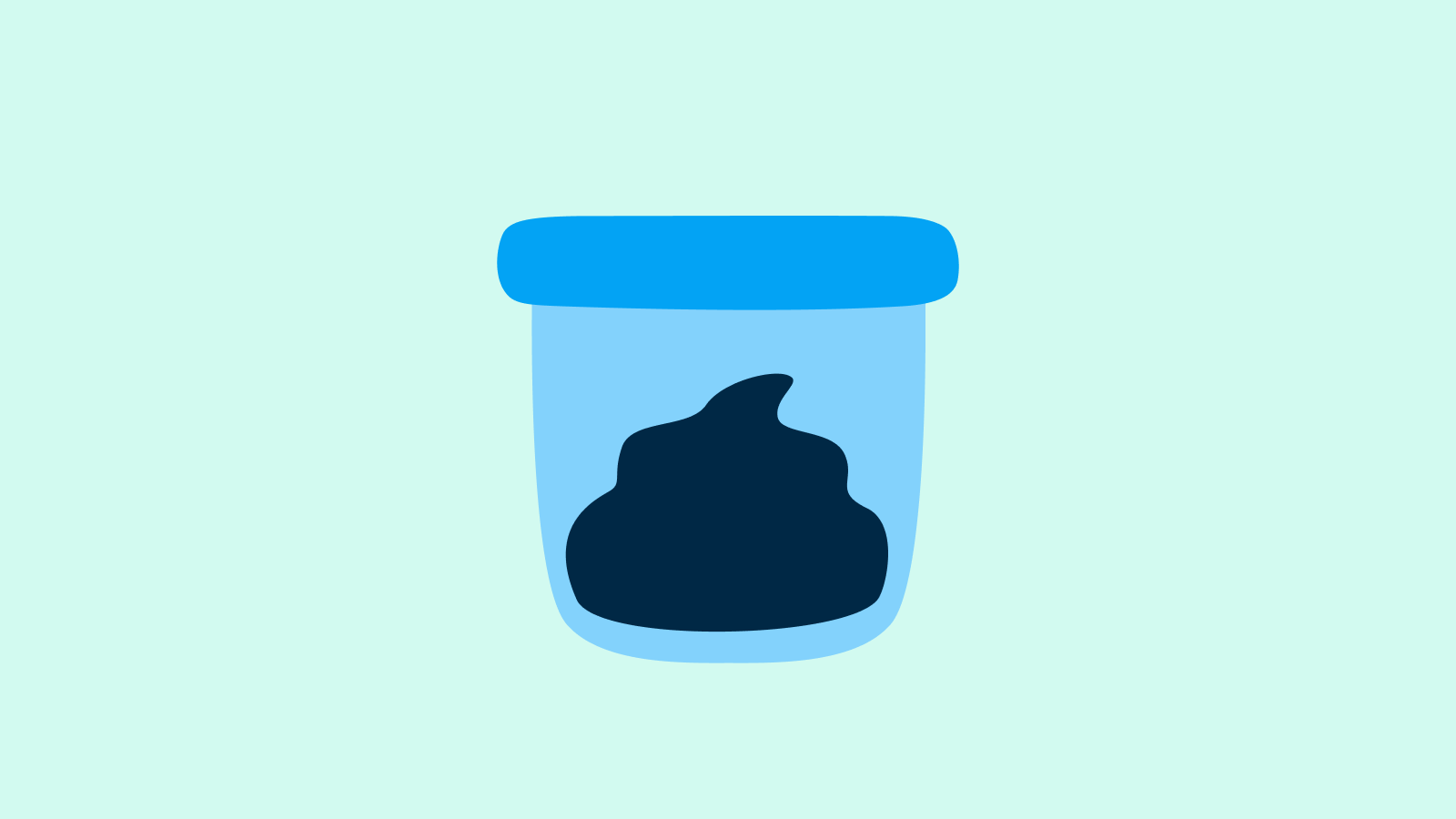Though many of us find the thought of taking a poo sample daunting, your poo can tell you a lot about your health. It’s always worth getting it checked out if you suspect something isn’t right.
A stool sample can help to detect anything from a bad stomach bug to an E. coli infection. It’s also one of the best ways to detect signs of bowel cancer.
What is a stool sample test?
A stool sample test involves depositing some of your poo, usually into a pot. A doctor can then use this sample to investigate further, depending on your symptoms.
There are different types of stool sample tests that your doctor can suggest, depending on the problem being investigated.
A nutritional therapist or medical practitioner may also recommend you do a stool sample test to check your gut health.
What are the main different types of stool sample test?
A test for blood in your poo
One of the most common stool sample tests looks for blood in the stool. It’s important to remember that blood in your stool isn’t always easy to see. This is sometimes known as a faecal occult blood test – ‘faecal’ is the Latin name for poo, and ‘occult blood’ means blood that isn’t visible to the eye.
A test for bacterial cultures in your poo
This checks for the presence of bacteria such as salmonella, shigella or E. coli in the gut. In the UK, you might have this test if you’re experiencing diarrhoea after a stay abroad, for example.
Screening for bowel cancer
Bowel cancer is the fourth most common type of cancer in the UK, and screening can help to detect it at an early stage.
Currently, NHS bowel screening checks are available to everyone aged 60-74 years. The programme is growing to include everyone from 50-59 years across the next 4 or so years.
For this, you use a home test kit called a faecal immunochemical test (FIT) to collect a small sample of your poo. This will then be sent to a lab to check for tiny amounts of blood.
How do I know if I need a stool sample test?
Healthcare professionals will assess if and when you need to provide a stool sample. But some key symptoms might include:
- Diarrhoea or stomach sickness that doesn’t go away on its own
- Blood in your stool or anything that looks dark and tar-like in your poo
- A change in your bowel habits
- Lower stomach pain
What can be picked up in a stool sample?
Stool tests can help to investigate:
- An infection caused by bacteria such as salmonella, shigella or E. coli
- A parasite
- Worms
- Inflammatory bowel disease (IBD)
- Fat malabsorption – if you have abnormally high amounts of fat, this could be a sign that you’re not digesting it properly and may need further tests
- Bowel and colon cancer
What happens if I have blood in my stool?
Blood in the stool can have many possible causes. The most common causes are:
- Haemorrhoids (or piles)
- A rupture or tear of the rectum
- Ulcers
Other causes can include:
- Stomach upset – the lining of the intestine can become weak after an intense stomach upset, which can lead to blood in your poo
- Some medicines – blood thinners and anti-inflammatory drugs can cause bleeding in your gastrointestinal tract
Blood in your poo can also be caused by more serious diseases, such as:
- Crohn’s disease
- Ulcerative colitis
- Some forms of bowel cancer
Foods such as beetroot and blueberries can darken your poo and be mistaken for blood. Speak to a doctor if you’re unsure.
How does a stool sample work?
Most stool tests are done at home. It’s important to follow the instructions provided as the method of sampling may differ. A doctor or other healthcare professional, like a nurse, will explain how to collect the sample.
Usually, you’ll collect the poo in a clean, dry screw-top container using a spatula. The test is usually quick, easy to do and completely pain-free. Here’s a simple step-by-step of how to do a stool sample:
- Fill in your details on the label on the container.
- Place something in the toilet like a potty to catch the poo, or try spreading plastic wrap or lots of toilet paper over the rim of the toilet.
- Make sure the poo doesn’t touch the inside of the toilet.
- Use the spatula that comes with the container to collect your poo and transfer it to the container, then screw the lid shut.
- Try to fill around one-third of the container.
- Put anything you used to collect the poo in a plastic bag, tie it up and put it in the bin.
- Wash your hands with soap and warm water.
- Follow any other instructions the doctor has given you – usually this will mean handing your stool sample in as soon as possible, as it’s important for your poo to be fresh when it’s tested.
Sometimes, you need to take the test on different occasions or a few days apart, to make the examination more reliable.
If you have periods or bleeding haemorrhoids, you should consult your doctor about when to have the test.
When should I speak to a doctor?
If you’re having bowel problems or worried about blood in your poo, speak to a doctor. Always seek medical attention if you have:
- Visible blood in your poo or dark stools
- Changed bowel habits (without a significant change in your diet)
- Pain in your stomach that doesn’t go away
- Fatigue that can’t be explained
- Unexplained weight loss
If you’re experiencing heavy bleeding with diarrhoea, contact emergency services as soon as possible.
This article has been medically reviewed by Dr Bryony Henderson, Lead GP at Livi.
